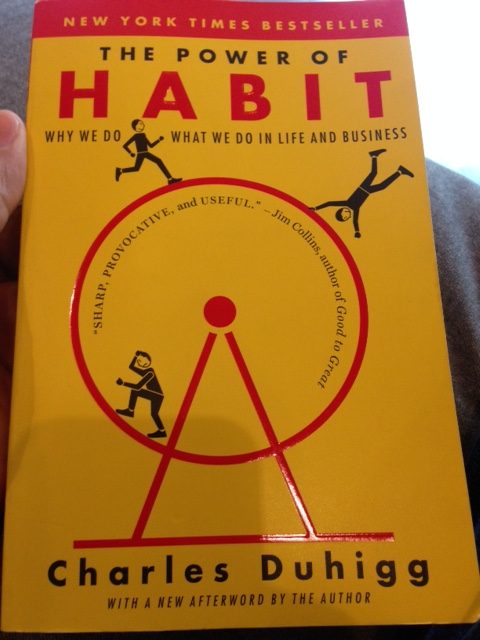THE BIG IDEA: We, as individuals and organizations, operate by habit; learn how to engineer good habits; learn how to identify keystone habits that shape many other habits
KEY TAKEAWAYS FROM THE POWER OF HABIT
- Habits emerge because the brain is looking for ways to save effort.
- The habit loop is: cue => routine => reward.
- Craving for the reward is what powers the habit loop (eg. Febreze, Pepsodent.)
- To change a bad habit, first understand the cues and the true rewards that power the habit. Then keep the cue but change the routine (eg. Tony Dungy, AA.) Also, change is more likely if done with a group.
- Changing a keystone habit will start a chain reaction that can change many other habits (eg. Alcoa, Michael Phelps.)
- Willpower can become a habit when you choose a certain behavior ahead of time, and then follow the routine at the appropriate time (eg. Starbucks.)
- Even destructive habits can be transformed by leaders who know how to seize the opportunity offered by a a crisis (eg. Rhode Island Hospital, London Underground.)
- To market a new habit, you must understand how to make the novel seem familiar. Carefully insert new habits alongside old habits (eg. Target, Outkast, organ meats, YMCA.)
- A social movement starts because of the social habits of friendship and the strong ties between close acquaintances. It grows because of the habits of a community and the weak ties that hold neighborhoods and clans together. And it endures because a movement’s leaders give participants new habits that create a fresh sense of identity and a feeling of ownership (eg. Rosa Park, Rick Warren.)
- Although habits are hardwired, people have the power to rewire their brains (eg. William James, compulsive gambling.)
- To change a habit, 1) identify the routine in order to insert a new routine, 2) experiment with different rewards in order to determine the underlying craving, 3) isolate the cues by writing down what happens when the craving hits, 4) have a plan. The plan will use the existing cues, insert a new routine, and link it to the true underlying reward/craving.
